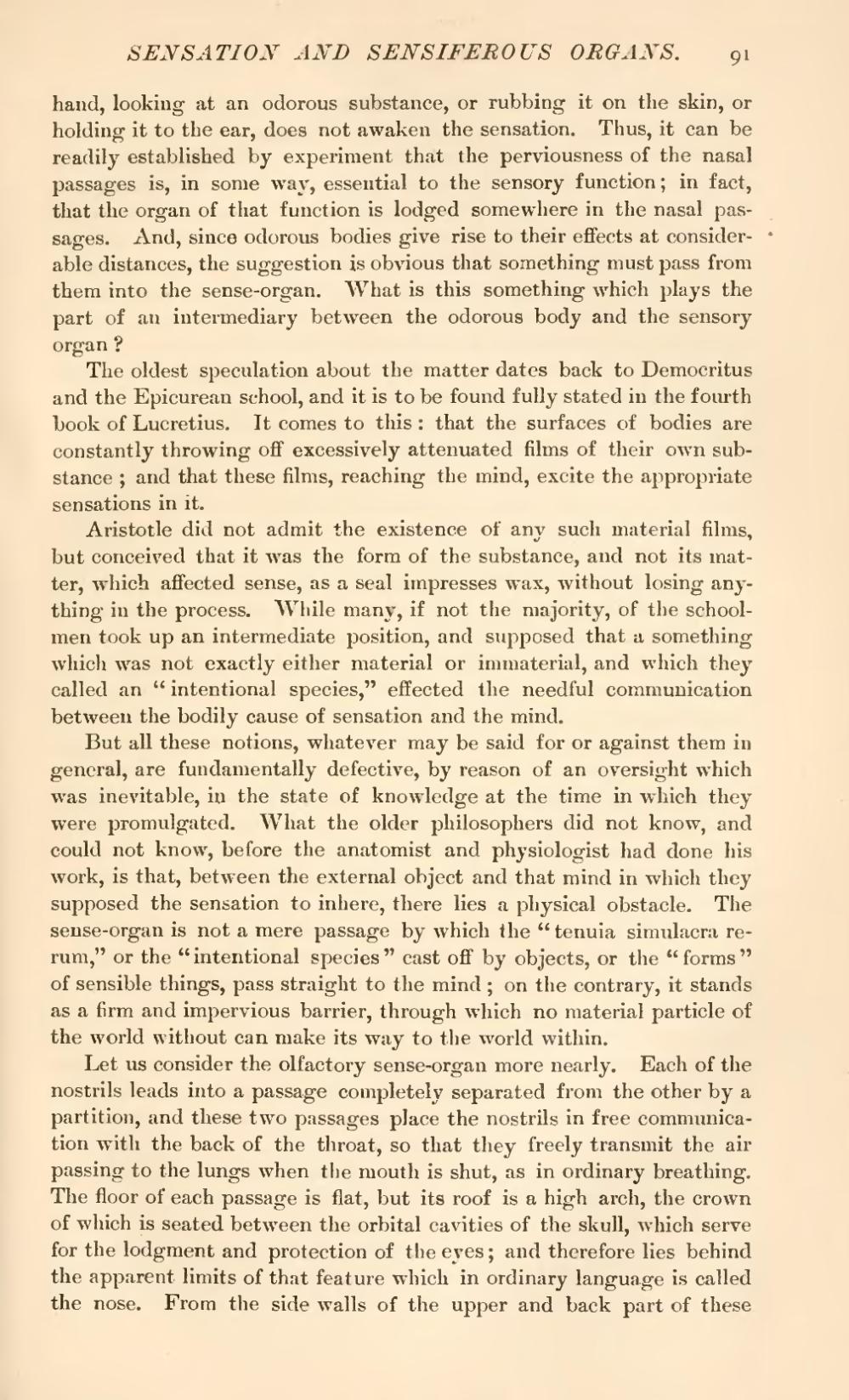hand, looking at an odorous substance, or rubbing it on the skin, or holding it to the ear, does not awaken the sensation. Thus, it can be readily established by experiment that the perviousness of the nasal passages is, in some way, essential to the sensory function; in fact, that the organ of that function is lodged somewhere in the nasal passages. And, since odorous bodies give rise to their effects at considerable distances, the suggestion is obvious that something must pass from them into the sense-organ. What is this something which plays the part of an intermediary between the odorous body and the sensory organ?
The oldest speculation about the matter dates back to Democritus and the Epicurean school, and it is to be found fully stated in the fourth book of Lucretius. It comes to this: that the surfaces of bodies are constantly throwing off excessively attenuated films of their own substance; and that these films, reaching the mind, excite the appropriate sensations in it.
Aristotle did not admit the existence of any such material films, but conceived that it was the form of the substance, and not its matter, which affected sense, as a seal impresses wax, without losing anything in the process. While many, if not the majority, of the schoolmen took up an intermediate position, and supposed that a something which was not exactly either material or immaterial, and which they called an "intentional species," effected the needful communication between the bodily cause of sensation and the mind.
But all these notions, whatever may be said for or against them in general, are fundamentally defective, by reason of an oversight which was inevitable, in the state of knowledge at the time in which they were promulgated. What the older philosophers did not know, and could not know, before the anatomist and physiologist had done his work, is that, between the external object and that mind in which they supposed the sensation to inhere, there lies a physical obstacle. The sense-organ is not a mere passage by which the "tenuia simulacra rerum," or the "intentional species" cast off by objects, or the "forms" of sensible things, pass straight to the mind; on the contrary, it stands as a firm and impervious barrier, through which no material particle of the world without can make its way to the world within.
Let us consider the olfactory sense-organ more nearly. Each of the nostrils leads into a passage completely separated from the other by a partition, and these two passages place the nostrils in free communication with the back of the throat, so that they freely transmit the air passing to the lungs when the mouth is shut, as in ordinary breathing. The floor of each passage is flat, but its roof is a high arch, the crown of which is seated between the orbital cavities of the skull, which serve for the lodgment and protection of the eyes; and therefore lies behind the apparent limits of that feature which in ordinary language is called the nose. From the side walls of the upper and back part of these

